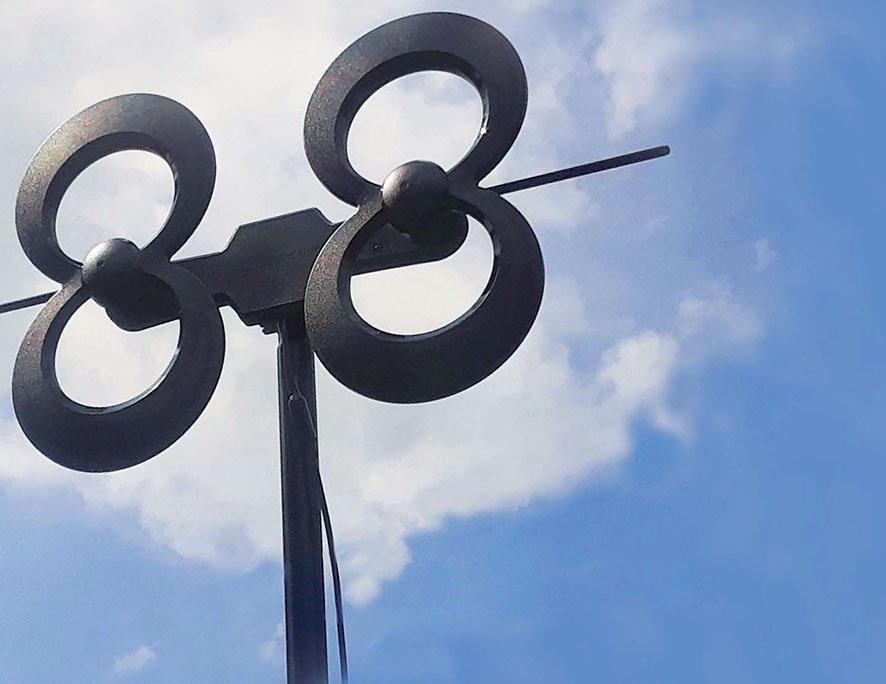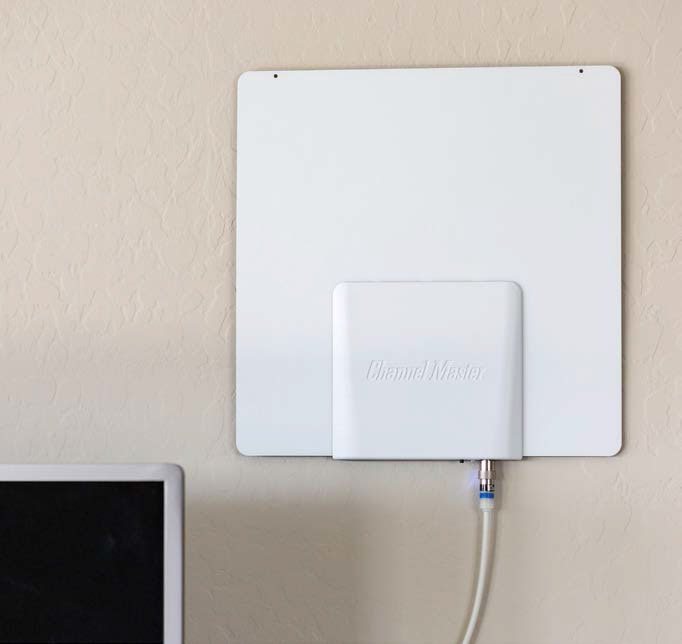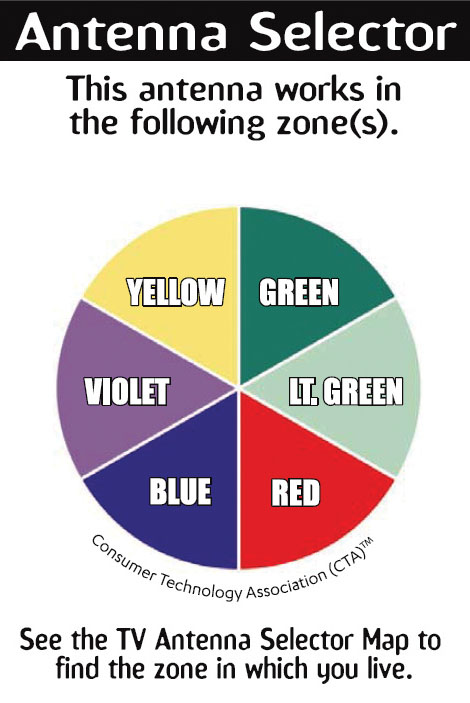Rabbit Ears No More

BETHESDA, MD.—About 8.1 million Americans will buy TV antennas this year, according to a mid-year analysis by the Consumer Technology Association, reflecting the growing audience for over-the-air broadcast signals as more homes cut—or at least trim back—their cable subscriptions. This year’s estimates will mark a peak in antenna sales, which have been hovering just under the 8 million level for several years and which are expected to decline only slightly in the near future, according to CTA’s latest analysis.
One wild card in future antenna sales is the impact of the new ATSC 3.0 standard, which will debut over the next several years.
“When 3.0 rolls out, consumers will become aware of additional services, and that will give a boost to antenna sales,” said Brian Markwalter, senior vice president, research and standards for CTA. “Viewers won’t need any special antennas to receive 3.0, but reception may be affected by the repack” of channels.
SUPPLEMENTING PROGRAM CHOICES
Markwalter, as do others who follow the antenna business, contends that the steady sales of home antennas reflects the increased rate of cord cutting by cable subscribers.
CTA’s research shows “one in five consumers say they watch OTA through an antenna,” said Ben Arnold, senior director of innovation and trends at CTA. “The reasons all revolve around supplementing their programming.” Cord-cutters or trimmers “want live TV plus OTT,” Arnold adds.
That combination of OTA and OTT is reflected by some of the new antenna kits that combine access to OTA and broadband. Likewise, viewers who toggle between live broadcasts and on-demand streams keep their antennas inside. Stephen Baker, vice president of industry analysis at research firm NPD Group, Inc., says that the bundled products “solve some of the customer satisfaction issue.”
The professional video industry's #1 source for news, trends and product and tech information. Sign up below.
“People aren’t necessarily buying [antennas] on their own when they cut the cord, but are getting them through their subscriptions or their devices that are enabling them to make the cut,” he said.
Although most antennas sell for about $30–$80, versions for multidirectional (180-degree range) and long-range directional (up to 100 miles) reception cost up to $160. NPD, which estimates about 34 million antennas have been sold since 2014, has found that the average retail price of about $26 “has been very stable over that time,” Baker said. He doesn’t expect many repeat or add-on sales since antennas are “not a product that gets a lot of upgrade or replacement purchases [unless something happens to the old one] due to a change in technology.”
“About 90 percent of the antennas are classified as indoor,” said Baker, whose firm also tracks hardware sales and usage. “Obviously most antennas today are pretty small and digital. They are not like those rooftop things from the ’60s but are more like ‘modern rabbit ears.” He also points out that cord-cutters who discover antennas may have to be trained about how to use them, especially since many customers have little understanding of OTA broadcasts.
“They need some help in being reminded what an antenna is for,” Baker said.
AVAILABLE OPTIONS
Joe Bingochea, president of Channel Master, one of the largest U.S. antenna makers, agrees that while not all cord-cutters will use OTA, “our experience shows that a percentage of them will use OTA to supplement whatever streaming services they choose.”

Bingochea adds that antenna reception can be tricky. “When the consumer cuts the cord, who do they look to when there is a problem?” he asks rhetorically, explaining that his company’s components, including cables and connectors, enable users to put together entire systems. Channel Master’s product line includes the “Stream+” (for OTA and DVR) and the “Smartenna+,” a smart indoor antenna with active steering technology.
Bingochea says that Channel Master sales are diversified among a variety of retail, installer and online avenues. Antennas are sold at Best Buy, Home Depot, Fry’s Electronics as well as small dealers and etailers including Amazon and the company’s own website.
Richard Schneider, president of Antennas Direct, expects the market for antennas “will accelerate as cord-cutting becomes more mainstream.” The company’s new ClearStream antennas relay signals over a home’s Wi-Fi network, allowing customers to place the antenna in a convenient location then send signals to TV sets around the home.
The company started as an e-commerce venture from suburban St. Louis, but has migrated to other sales outlets and now only about 10 percent of its sales come from the Web, Schneider said. Its products are available in 8,000 stores, include Walmart, Best Buy, Lowes, Fry’s and regional chains plus Amazon.
Schneider’s customer research has found that new customers are “more female and less tech oriented.” Antennas Direct’s early users were people trying to connect a “$50,000 home theater” whereas today’s budget-conscious customers “is usually buying an antenna to complement a Netflix subscription,” Schneider told TV Technology.
FIRST TIMERS
One gauge of consumer interest in antennas is the growing usage of AntennaWeb.org, which lets consumers figure out what kind of antenna they’ll need to pick up local broadcast signals based on their address.

More than 2.6 million users checked into the site during 2017, and at least 85 percent of them were first-time users, according to Mick Rinehart, president of TitanTV Inc., which operates the free online service. AntennaWeb was created by the Consumer Technology Association at the dawn of the digital TV era a decade ago. NAB teamed up with CTA, and both are now co-sponsors for TitanTV’s antenna checking service. Users see a color-coded “selector map” which matches the labels on antennas, indicating the type of device needed for a specific location.
“From the number of new visitors, it is apparent that interest in cord cutting continues to grow,” says Rinehart.
He acknowledges that AntennaWeb originally focused on signal strength calculations and antenna recommendations for outdoor reception; but now there is high interest in indoor antennas. The reception information, based on signal data from CTA and other sources, incorporates topographic and environmental factors that can affect television reception at a viewer’s location.
“There are many variables within their home that will also impact reception via an indoor antenna,” Rinehart adds, pointing to a resources section of the site that offers advice on how to choose, connect and place an indoor antenna for optimum reception.
BROADCAST PARTNERSHIPS
Antennas Direct saw the increased demand for over-the-air antennas even before the current cord-cutting trend began to take hold.

Phones at the company’s St. Louis headquarters “started ringing off the hook” a few years ago, with all the calls coming from Sacramento, Calif., recalled company President Richard Schneider.
“Unbeknownst to us, the Gannett station [now Tegna Media’s KXTV-10] was endorsing one of our models on a live newscast,” he said. “Then the following week, WLUK in Green Bay [Sinclair Broadcasting] asked if we could come up in 48 hours to hand out antennas and appear on the news during a retransmission dispute,” Schneider continues.
“And I thought, ‘hey’—there are 1,800 full-power broadcasters, so we should do this 1,798 more times.”
As a result, the company set up a “Broadcaster Partners Program,” which involves antenna giveaways in exchange for on-air time in which Antennas Direct “extols the virtues of free over-the-air TV,” Schneider said.
“So far we have given away more than 14,000 antennas in 52 markets.”
Schneider said he wants to “partner with more broadcasters to get the news out about how... using an antenna with a streaming service can save the average household about $1,800 per year.”
Other antenna marketers have collaborated with TV broadcasters as well. Channel Master has “several relationships” and has launched joint promotions with stations “to promote OTA awareness,” according to Bingochea.

IMPACT OF REPACK, NEXT GEN TV
CTA’s Arnold expects antenna prices may go up slightly because 3.0 will deliver new features that may require better antennas, but any increases may be offset by volume deals as more customers buy antennas.
Bingochea of Channel Master contends that the 3.0 business model “is not far enough along to gauge the potential impact” although he believes that the addition of 4K and HDR will attract new consumers.
AntennaWeb’s Rinehart expects the upcoming channel repack program, which affects broadcasters and their channel assignments, will give new impetus to the antenna selection process. But he acknowledges that some customers may be surprised by what they find.
“If a local station that you would expect to see is not listed in AntennaWeb, its predicted signal strength may be calculated to be just a fraction of a dBu below the threshold for that channel,” he explains. “Nevertheless, because it is below the minimum dBμ cutoff value, it is not displayed.”
Rinehart also pointed to a growing consumer complaint about finding shows—especially in a milieu of blended OTA and OTT content.
“The emergence of Diginets [DTV auxiliary channels] has expanded the genre and variety of content free for viewing,” he said, but cited the challenge for consumers who want an electronic program guide when moving between paid and free video. His company’s free consumer TV Listings site includes channel lineups for all platforms (OTA, OTT, cable, satellite) and can be blended into a single custom guide from disparate sources.
NAB agrees that antennas are a permanent part of the expanding media landscape.
“More than 72 million Americans rely on over-the-air television received through an antenna,” said Dennis Wharton, executive vice president of communications for the association. “Traditional OTA viewers as well as cord-cutters and cord-nevers are discovering an abundance of today’s most popular HD broadcast programming available for free using an antenna, which now come in sleek easy-to-install designs.”
Nielsen’s first quarter 2018 Total Audience Report noted that “broadcast-only” homes were up by 6 percent (to 16.53 million households) compared to previous quarter. During the past year, the share of homes getting OTT and other subscription video-on-demand services also climbed and now reaches 64 percent of U.S. homes.
Bingochea of Channel Master sees the current OTA/OTT era as the continuation of the evolving video delivery industry. He says that he has “experienced the changes in the antenna business over the years when things like cable, C-band satellite and Direct Broadcasting Satellites were introduced.”
“Now we are just in a new phase.”
Gary Arlen, a contributor to Broadcasting & Cable, NextTV and TV Tech, is known for his visionary insights into the convergence of media + telecom + content + technology. His perspectives on public/tech policy, marketing and audience measurement have added to the value of his research and analyses of emerging interactive and broadband services. Gary was founder/editor/publisher of Interactivity Report, TeleServices Report and other influential newsletters; he was the long-time “curmudgeon” columnist for Multichannel News as well as a regular contributor to AdMap, Washington Technology and Telecommunications Reports; Gary writes regularly about trends and media/marketing for the Consumer Technology Association's i3 magazine plus several blogs.

